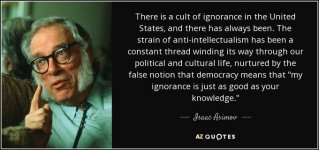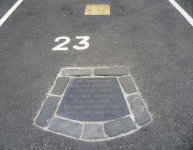The Great Awakenings (Moral Crusades)
The First Great Awakening (1730 to 1755) - prompted by the work of George Whitefield, co-founder of the Anglican Methodist movement together with the Wesley brothers. Characterized by anti-establishment revival meetings. Associated with the backcountry in the US.
The Second Great Awakening (1790-1840) - the Second Great Awakening in
North America reflected
Romanticism characterized by enthusiasm, emotion, and an appeal to the
supernatural.
[2] It rejected the skepticism,
deism,
Unitarianism, and
rationalism left over from the
American Enlightenment,
[3] about the same time that similar movements flourished in
Europe.
Pietism was sweeping
Germanic countries[4] and
evangelicalism was waxing strong in
England.
[5] The Second Great Awakening occurred in several episodes and over different denominations; however, the revivals were very similar.
[3] As the most effective form of evangelizing during this period, revival meetings cut across geographical boundaries.
[6] The movement quickly spread throughout
Kentucky,
Indiana,
Tennessee, and
southern Ohio, as well as other regions of the United States and Canada.
The Third Great Awakening (1855-1930) - The American Protestant
mainline churches were growing rapidly in numbers, wealth and educational levels, throwing off their
frontier beginnings and becoming centered in towns and cities. Intellectuals and writers such as
Josiah Strong advocated a
muscular Christianity with systematic outreach to the
unchurched in America and around the globe. Others built colleges and universities to train the next generation. Each denomination supported active
missionary societies, and made the role of missionary one of high prestige.
[6] The great majority of
pietistic mainline Protestants (in the North) supported the
Republican Party, and urged it to endorse prohibition and social reforms.
[7
Across the nation
drys crusaded in the name of religion for the
prohibition of alcohol. The
Woman's Christian Temperance Union mobilized Protestant women for social crusades against liquor, pornography and prostitution, and sparked the demand for
women's suffrage.
[10]
The
Gilded Age plutocracy came under sharp attack from
Social Gospel preachers and
reformers in the
Progressive Era. The historian
Robert Fogel identifies numerous reforms, especially the battles involving
child labor, compulsory
elementary education, and the protection of women from exploitation in factories.
[11] With
Jane Addams's
Hull House in Chicago as its center, the settlement house movement and the vocation of social work were deeply influenced by the Social Gospel.
[12]
In 1880, the
Salvation Army denomination arrived in America. Although its theology was based on ideals expressed during the
Second Great Awakening, its focus on poverty was of the Third.
All the major denominations sponsored growing missionary activities, both inside the United States and around the world.
[13][
full citation needed]
Colleges associated with churches rapidly expanded in number, size and quality of
curriculum. The promotion of "muscular Christianity" became popular among young men on campus and in urban
YMCAs, as well as in such denominational youth groups such as the
Epworth League for
Methodists and the
Walther League for
Lutherans.
The Fourth Great Awakening (1960-1980) - Typified by Billy Graham evangelism. The
Fourth Great Awakening was a
Christian awakening that some scholars – most notably
economic historian Robert Fogel – say took place in the
United States in the late 1960s and early 1970s, while others look at the era following World War II. The terminology is controversial, with many historians believing the religious changes that took place in the US during these years were not equivalent to those of the first three
great awakenings. Thus, the idea of a Fourth Great Awakening itself has not been generally accepted.
[1]
Whether or not they constitute an
awakening, many changes did take place. The "
mainline"
Protestant churches weakened sharply in both membership and influence while the most conservative religious denominations (such as the
Southern Baptists and
Missouri Synod Lutherans) grew rapidly in numbers, spread across the United States, had grave internal
theological battles and
schisms, and became
politically powerful. Other
evangelical and
fundamentalist denominations also expanded rapidly. At the same time,
secularism grew dramatically, and the more
conservative churches saw themselves battling secularism in terms of issues such as
LGBT rights,
abortion, and
creationism.
[2][3]
Courtesy of Wikipedia
The Wokening (Or the Fifth Great Awakening) - same moral impetus, same organizing principles. The secular church.
The 2nd to 5th Awakenings were, IMO, typified by their rejection of the liberalism of the Enlightenment, rationalism and of natural law and natural religion. But all of them spoke to a cultural need within society on both sides of the Atlantic and across the Pacific. Something that offers a rock to hold on to while everything changes.





